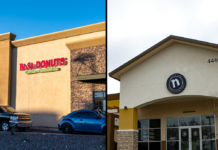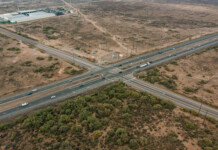In the wake of the catastrophe in
The triple-reactor plant, located about 50 miles northwest of Maricopa, has a history of poor safety evaluations that have raised concerns for officials and residents. The problems ranged from leaking oil seals in reactor cooler pumps to backup diesel generators that were broken for 18 days in 2008.
Starting in 2007, the plant was listed by the NRC as a Category 4, which meant the agency kept a close watch on it. After repairs were made, the NRC moved the plant to Column 1 of its Action Matrix, representing the lowest danger level on the scale.
In a March 16, 2011 letter to the majority owners – Arizona Public Services and Salt River Project – Arizona Corporation Commissioner Paul Newman asked a series of questions to gain insight into the current state of the facility.
Here are Newman’s questions:
1. What are the sources of back-up power for PVNGS; how long would each system provide back-up power? Please provide as much detail as possible.
2. What would happen if PVNGS had a total and sudden loss of power?
3. How much cooling water is stored on-site; does it require electricity or is it gravity-fed; how long would the cooling water last in case of catastrophic failure? Please provide as much detail as possible.
4. How much waste is stored on-site; are there spent fuel ponds that are open to the air? Please provide as much detail as possible.
Newman also said in the letter that he was getting inquiries about the plant, which ranks among the top 20 nuclear generators in the nation that would be affected by an earthquake.
“I have been getting a lot of questions from constituents who are wondering about possible issues at PVNGS, and understand from a study done by the Nuclear Regulatory Commission that Arizona’s nuclear power plant ranks 18th on a list that ranks over 100 nuclear power plants in the U.S. at risk of core meltdown from earthquakes. I know that APS and SRP have high safety standards but would like to hear about their concerns and plans in case they lose cooling water,” Newman’s letter said.
Since the earthquake and tsunami hit Japan on March 11 the overheating Fukushima Daiishi nuclear power plant located near Tokyo has made news around the world as a core meltdown threatens. The overseas disaster has prompted the NRC to assess safety procedures of the Palo Verde plant, along with others in the U.S.
Palo Verde officials have already briefed Arizona legislators about safety measures that would be taken if there was a natural disaster or major problem at the plant that caused the cooling water to fail.
While the majority of the city of Maricopa falls just outside the 50-mile evacuation radius around the Palo Verde reactors, the boundary does cross just south of Smith-Enke Road.
However, if there was a major problem at the facility, Maricopa would be protected from most fall out with the Estrella Mountains providing a barrier between Palo Verde and the city.
“For Maricopa, our risk of radiation exposure is relatively low,” said Fire Chief Wade Brannon. “We get some protection from the mountain ranges and the prevailing winds. What the city ends up doing is being a responder to the areas that are affected.”
The Arizona Aid System links state fire, police and other emergency responders, allowing agencies to share information and respond to emergencies with a coordinated effort.
“Plan on 72 hours before Federal resources arrive,” said Brannon. “Maricopa would assist other cities with their 72-hour needs (inside the 50 mile hot zone). There are agreements among 26 different fire districts and municipalities that say we are going to share communications, procedures and training, and the closest trucks will respond regardless of jurisdiction.”
Every year, the Maricopa Fire Department participates in preparedness training exercises that include other agencies from around the Phoenix area at the Tempe APS training center.
“We are prepared for all hazards response,” said Maricopa Fire Spokesman Brad Pitassi. “Whether it’s the nuclear power plant, a flood or a train derailment. If something went wrong (at Palo Verde) and the state had to step up a response to support the local effort, they have the resources to do that.”
For more information about area emergency response plans and tips for personal and family preparedness, go to http://www.ready.gov.






![Silk Press Xpress ready to welcome new clients Maricopa Chamber of Commerce Director Kelly Anderson and Councilmember Henry Wade smile as LaQuinta Fisher cuts the ribbon in front of her new salon, Silk Press Xpress, on April 6, 2024. [Monica D. Spencer]](https://www.inmaricopa.com/wp-content/uploads/2024/04/spencer-040624-silk-press-xpress-ribbon-cutting-web-01-218x150.jpg)











